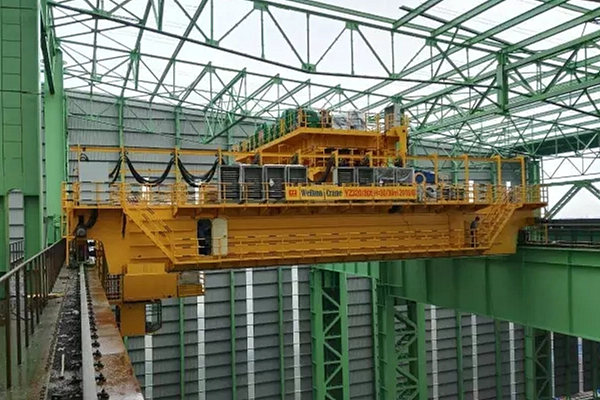The definition of crane
A crane is a type of machine, generally equipped with a hoist rope, wire ropes or chains, and sheaves, that can be used both to lift and lower materials and to move them horizontally. It is mainly used for lifting heavy things and transporting them to other places. The device uses one or more simple machines to create mechanical advantage and thus move loads beyond the normal capability of a human. Overhead cranes are commonly employed in the transport industry for the loading and unloading of freight, in the construction industry for the movement of materials, and in the manufacturing industry for the assembling of heavy equipment.

The history of crane
The first known crane machine was the shadouf, a water-lifting device that was invented in ancient Mesopotamia (modern Iraq) and then appeared in ancient Egyptian technology. Construction cranes later appeared in ancient Greece, where they were powered by men or animals (such as donkeys), and used for the construction of buildings. Larger cranes were later developed in the Roman Empire, employing the use of human treadwheels, permitting the lifting of heavier weights. In the High Middle Ages, harbour cranes were introduced to load and unload ships and assist with their construction – some were built into stone towers for extra strength and stability. The earliest cranes were constructed from wood, but cast iron, iron and steel took over with the coming of the Industrial Revolution.
For many centuries, power was supplied by the physical exertion of men or animals, although hoists in watermills and windmills could be driven by the harnessed natural power. The first 'mechanical' power was provided by steam engines, the earliest steam crane being introduced in the 18th or 19th century, with many remaining in use well into the late 20th century. Modern cranes usually use internal combustion engines or electric motors and hydraulic systems to provide a much greater lifting capability than was previously possible, although manual cranes are still utilized where the provision of power would be uneconomic.
The function of lifting machine
There are great differences in the structure among all the lifting machinery , but have to achieve the lifting mechanism of lifting this basic action. Some hoisting machinery also has the operating mechanism, luffing mechanism, rotating mechanism or other special working mechanism. Materials can be hoisted by flexible parts such as wire rope or hoisting chain, or jacked by screw or other rigid parts. Lifting machinery is a kind of space transport equipment, the main role is to complete the displacement of heavy objects.It can reduce labor intensity and improve labor productivity. Lifting machinery is an indispensable part of modern production, some lifting machinery can also carry out some special technological operations in the production process, so that the production process to achieve mechanization and automation.
